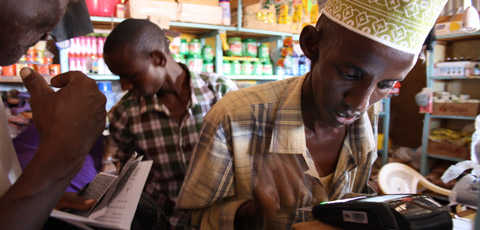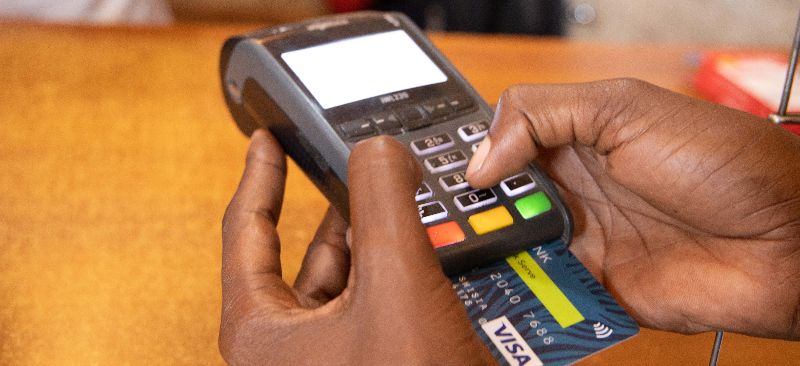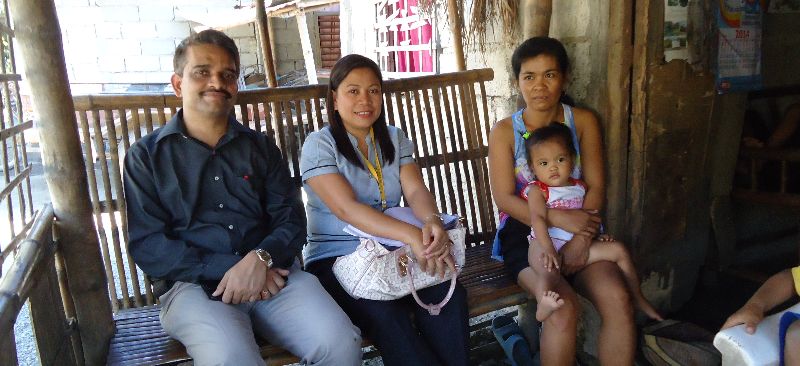Blog
Loyalty based Mobile Insurance: Is Design Aligned to Business Objectives?
Mobile insurance (the mechanism of delivering insurance products through mobile devices) has reached an impressive scale of more than 10 million clients in last 2-3 years. Most of the outreach, however is contributed by loyalty based mobile insurance products, where a telecom operator pays premium on behalf of its clients to augment their usage and/or loyalty. Many argue that mInsurance should follow a gradual progression curve where a client graduates from such loyalty insurance to freemium and finally to a voluntary/fully paid insurance platform.Though the enthusiasm is understandable, there is increasing concern that such products are dependent on the business model and marketing priorities of MNOs. For loyalty insurance to sustain, therefore, it is imperative to understand and align the product/s to strategic objectives of MNOs in different markets and countries. In this Note, we discuss shifting strategic objectives of telecom operators / mobile network operators (MNOs) and how mobile insurance can be customised to suit to their needs.
In Our Digital Financial Service We Trust?
“We keep hearing mobile money users complain about unstable network, delayed service, missing money and many other negative comments about mobile money. Why then should we register for these services?”
After years of preoccupation with over-coming the core challenges of establishing large-scale, sustainable digital finance (largely mobile money) systems in developing countries, we are seeing growing attention to consumer protection. High time too. But actually many of the key consumer protection issues relate to basic customer service – and appear to be creating real problems for providers by undermining trust in their digital financial services (DFS) and thus reducing both uptake and usage.
Fraud: To be honest MicroSave’s initial motivation to push consumer protection for DFS was a fear that a high profile DFS provider would be subjected to widespread fraud at the agent, or even worse, customer level. And that a regulatory clamp down, similar to what we saw in Andhra Pradesh, would follow. To date this does not seem to have happened, although this is not for want of fraudsters trying, and remains still a distinct possibility. The only major DFS fraud that is in the public domain is the one committed by employees MTN-Uganda through which MTN lost $3.4 million in 2012 … but industry insiders speak of many more such “inside jobs” that have been swept under the carpet.
But when MicroSave conducted a review of consumer concerns and issues in Bangladesh, Philippines and Uganda for CGAP, fraud was not a major issue for DFS users in any of these markets; and only a relatively minor one in Uganda where it is so prevalent. Instead, DFS customers were above all concerned about service downtime, agent illiquidity, their fear of sending money to the wrong number and the charging of unauthorised fees by agents.
These concerns were have a significant negative impact on the customer experience, costing them money and, in some cases increasing their exposure to frauds by agents. They are also negatively impact customer registration and usage.
Service downtime: As with all systems, including those used to run ATMs across the globe, there are times when the service is down and unavailable for a while. This can be as a result of systems being down or (where several institutions are involved) when one system is unable to get access to another to complete a transaction. Irrespective of the source of the problem, as a result of what customers call “service downtime”, there are delays in effecting cash-in/cash-out transactions, which denies them access to their own money, a serious problem for any financial service. Service downtime also leads to another important risk: where people trust the agent, they leave their money with him to conduct the transaction as and when the network improves. This leaves scope for the agent not to complete the transaction when the network is back up. In India, MicroSave has seen at least one instance where an agent took cash deposits for four days, explaining that the system was down and he would complete the transaction as soon as it was back up again … before fleeing with in excess of $2,500.
Agent illiquidity also has parallels in ATM systems – we have all stood, frustrated, in front of an ATM that has run out of cash to dispense. It is common for DFS customers to run into agents without sufficient liquidity. As a result, customers are either denied transactions and/or are required to visit two/three agents to send or receive money. While notably less common in Bangladesh, The Helix 2013 Uganda ANA report highlights that (on average) three transactions are denied each day per agent due to lack of float. This is equivalent to 10% average daily transactions being denied across the country. In the Philippines, the problem manifests in the form of a large number of dormant agents without any liquidity at all. This causes problems for customers, who have to search for another agent and face delays in transactions. It is reported that by 2013 there were a total of 24,000 registered agents; however, it is estimated that only 10,000 agents are active.
The fear of sending money to the wrong number is prevalent amongst DFS customers in both Uganda and Bangladesh. There is a clear understanding that money sent to the wrong recipient as a result of putting in the wrong number is rarely recovered from the lucky beneficiary. Indeed it is clear that this is one of the (many) drivers of the extensive market for over the counter (OTC) transactions, with all the negative implications for the long term profitability of DFS and for financial inclusion. Agents are trusted to be able to effect the transactions accurately … and besides, the sender can call the recipient to confirm that they have received the money before handing their money to the agent.
Charging unauthorised fees by agents is common across both Uganda and Bangladesh – especially for OTC transactions. There is a growing, but no means universal, acceptance that agents will charge a bit extra to conduct the transaction for his/her clients. In the Philippines, under the regulations, different agents are permitted to charge between 1-5% depending on their agreement with the service providers. This means that different agents charge different fees – typically according to how remote the agent’s location is. This gives rise to the relatively widespread perception that some agents are overcharging.
All these issues and concerns undermine customers’ trust in DFS systems. While customers are not being defrauded of enormous amounts of money, the perceived unreliability of systems, the uncertainty about whether agents will have the liquidity to conduct transactions and the amount they will charge for doing so, as well as worries about whether money remitted might be lost, all reduce confidence.
Why it matters: Both Uganda and Bangladesh continue to see impressive growth in the number of mobile money users and transactions. But (according to the Intermedia surveys) only 29% of Ugandan and 3% of Bangladesh adults have a registered mobile money account – and not all of these are active. Driving registration, and then regular use, at scale remains one of the key challenges facing the rollout of digital financial services in Africa, Asia and Latin America. Trust is key to any the uptake of any financial system, and, because of its ground-breaking nature, this is particularly true for DFS. It is clear that there are immediate potential wins for DFS providers who address consumer protection issues.
“Poor quality of service from telecom operators appears to be holding back the mobile money sector. The most common transaction problem faced by active account holders has been for their agent’s mobile network to be down.” – DFSRespondent Intermedia’s Financial Inclusion Insights Uganda Study: April 2014
In a recent study on the customer journey for UNCDF’s Mobile Money for the Poor (MM4P) in Uganda, MicroSave examined the barriers to non-users starting to use mobile money. Non-users in urban areas cited 1. unstable network; 2. high tariff charges and 3. unreliable customer care for issue resolution as their top 3 barriers. The rural non users ranked 1. unstable network; 2. unreliable customer care and 3. lack of documents for know your customer (KYC) as their top 3 barriers. It is important to note that these barriers are attributed by non-users as a result of word of mouth from users
However, addressing these issues is challenging for providers, as discussed in the next blog in this series (See “Solving Customer Service Issues”). Assessing the cost-benefits of doing so should be a priority for providers. But ultimately, it is essential that these issues are addressed before questions about accountability for, and ownership of, these risks become too persistent and pronounced, and regulators step in to enforce many of the existing laws, or add new ones.
Can Self-Service Channels Be The Next Frontier Of Financial Inclusion?
Information and communications technology (ICT) infrastructure in India has made rapid strides in the last decade. It has been estimated that a 10% increase in broadband connectivity leads to a 1.38% increase in the Gross Domestic Product (GDP)1. While urban India has witnessed an exponential growth in mobile and internet access, rural India is lagging behind. Recognising the need to enhance rural connectivity as a tool for socio-economic growth and better governance, the Government of India has approved setting up of a National Optical Fibre Network (NOFN) to connect 250,000 gram panchayats in the country using optical fibre.
Concurrently, over the last decade, there have been extensive efforts to improve access to good quality and convenient financial services. Starting in 2006, the Government of India and the Reserve Bank of India have taken many initiatives to drive financial inclusion in the country. The vision and the approach has been redefined and made significantly more intense through the Pradhan Mantri Jan Dhan Yojna (PMJDY) 2which led to over 159 million bank accounts being opened within a short span of eight months.
We believe there will be a convergence of financial inclusion, micro-payments, e-governance, Digital India initiatives and information based services. These programmes are laying a strong foundation to enable this convergence in the future.
Various technology-enabled models are currently being tested in order to efficiently deliver financial, e-governance and other information based services in rural India. However, to date, most initiatives like Common Service Centres (CSCs) and Customer Service Points (CSPs)have relied on a human interface for service delivery. As the rural populace becomes technology savvy (particularly with youth as early adopters and ambassadors) and with improving rural connectivity, self-service digital channels will become increasingly important.
Self-Service Digital Terminal – The Concept
We propose a concept wherein a smart self-service terminal can enable a range of relevant digital transactions for the residents. The objective will be to enable residents to use them for micro-payments, banking, e-governance and/or information based services. The self-service digital terminals can be deployed at large gram panchayat or market areas in a cluster of villages. The self-service channels should be designed using best practices and experiential learnings3. For example, a many rural residents would prefer to use ATMs (once familiar and comfortable with it) instead of, or in addition to, CSPs to avail services. Several financial services, such as cash withdrawal, balance enquiry and certain utility payments, can be considered for easy transition to self-service platforms. A human centred design and behavioural science-based approaches should consider aspects such as what should be the user interface?; what processes should be adopted?; what fall-back options should be available to residents, if the self-service systems were to fail, ? and how can the utility of the services for the rural end-users be maximised? (see Services offered below).
Blue print for the self-service digital terminals
Each self-service terminal should have the following basic components:
·Hardware: A touch screen LED/LCD terminal with internet connectivity, EMV card reader, Aadhaar biometric authentication mechanism, document scanner, audio device, document printer and a thermal receipt printer (similar to the one used in ATMs). Estimated total cost of the hardware will be around Rs.45,000–50,000 ($725-810). An additional Rs.9,000-10,000 ($145-160) is expected on annual maintenance. Given the rough usage and harsh environment these devices will be exposed to, their useful life is likely to be under 3 years.
Software: User friendly and multi-lingual user interface, interconnectivity with UIDAI and payments gateways, application programme interfaces (APIs) for access to e-governance portals, easy and convenient interface for content and information based services. We believe many IT service providers will be willing to develop this as a business model, once it is viewed as a national need and thus offers significant scale. Scale in-turn will also bring down unit cost of hardware and software.
Services offered
- Micro-payments and banking – prepaid recharge, utility payments, cash withdrawal, fund transfer / remittances, bus and railway ticketing, account enquiries (balance, transaction statement), insurance and pension premium payments, and so on.
- E-governance services – obtaining birth, caste, tribe, domicile, marriage and death certificates; Aadhaar enrolment; lodging complaints; Right to Information (RTI) requests, government/local body tax payments and so on.
- Information based services – agriculture (best practices, weather and price information); health (symptoms, home remedies and video consultation with doctors); employment (vocational trainings, job opportunities, applying for jobs); legal (rights, entitlements, procedure to gain access to government services); matrimonial; astrology and financial education.
Micro-payments and banking – Accessing micro-payments and banking services through these terminals would require users to authenticate through card and PIN, or Aadhaarbiometrics. Banks have issued nearly 142 million RuPay cards under PMJDY and several account holders have linked their bank accounts to Aadhaar in order to receive government benefits. These terminals would enable those who have cards with PIN or Aadhaar to conduct micro-payments and banking. As and when users conduct transactions, a fixed minimal charge can be deducted directly from their bank account based on the service availed. The details of the charges can be displayed on the terminals, SMS alerts sent and transaction slips provided.
E-governance and information based services – E-governance and information based services can be provided on a pay-per use or subscription models. Payments for such services can be made on similar lines as in the case of micro-payments. Tie-ups with digital content service providers (e.g. Digital Green, SVARK) including web portals (e.g. CSCs, farmer.in, shaadi.com; monsterindia.com; astrosage.com) will be important to customise content and services for the needs of the rural population in particular geographies.
While the potential of such an approach for accelerating delivery of digital financial and non-financial services is immense, but the design, simplicity and friendliness of the user interface will be very key to its success. A combination of audio and visual media and tools can be used to develop user interfaces that can meet the needs and preferences of rural users.
In early stages of implementation, panchayat officials and local communities, especially tech savvy youngsters/students, will have to be trained and tasked to assist people in navigating the interface to use services. The trainers assisting in educating residents to use such portals can be provided a nominal stipend along with some form of certification from government institutions. This will not only motivate, but also add to the profile of these trainers and enable them for better jobs in a digital India. Over a period of time, this approach will have the potential to evolve into a truly functional self-service channel, empowering rural masses through delivery of appropriate, affordable and accessible digital content and services. More importantly, the viability of this channel can be made to depend less on bank funding, by exploring opportunities to fund it from government programmes for e-Governance and Digital India, where we expect convergence to take place.
Driven by rapidly falling handset prices and tariffs for data access through mobile, coupled with a large population of technology savvy and early adopting youth, smart phones have witnessed rapid penetration in India. New smart phone handset sales are expected to touch the 150 million unit mark in 2015 and India will become the second largest smart phone market. Considerable innovation is evident in mobile applications with an increasing focus on making their usage simple, easy and convenient for the mass market. These trends will further catalyse and accelerate convergence of digital services and adoption of self-service devices and terminals by low income people.
Overall, the recommended model has a good likelihood of self-sustainability, as convergence will enable economies of scale and scope at each transaction point. Technology substituting human interface (agents) will further aid sustainability, as people costs will continue to rise while technology costs will continue to fall and rapidly so, when economies of scale and scope can be leveraged.
[1] http://www.bbnl.nic.in/content/page/project.php
[3] Several studies by MicroSave, CGAP and others highlight gaps in consumer aspirations/needs and user interface as well as technology solutions deployed available.
Responsible digital finance: Seven customer risks that need attention now

This blog was originally posted on the CGAP Blog
Digital financial services are growing globally, with a variety of offerings (more than 250) now serving 300 million people in developing markets according to the GSMA. However, inactivity rates are staggeringly high, with as many as two-thirds of registered digital financial services users inactive, and the cross-sale of products beyond simple person-to-person transfers in many markets is limited.
CGAP’s latest Focus Note, Doing Digital Finance Right: The Case for Stronger Mitigation of Customer Risks, reveals new evidence on customers’ perceptions and experiences with risks, and the ways these risks harm their trust, uptake, and use of the services. Ugandan consumers, for example, report that risks resulting from network and service unreliability deter them from using mobile money. Lapsed users – those who have been inactive for at least 90 days – in Tanzania say that they limit their use of digital financial services to emergency situations because recourse options are poor, and they fear making a transaction error they cannot resolve.
The Focus Note reviews current evidence on customer risks, including nationally representative quantitative surveys from the Financial Inclusion Insights (FII) studies and the Agent Network Accelerator (ANA) studies conducted by InterMedia and The Helix Institute, respectively, and funded by the Bill & Melinda Gates Foundation. It also draws on findings from four consumer protection-focused country case studies commissioned by CGAP (Bangladesh, Colombia, Philippines, and Uganda), analysis of FII qualitative findings and other available research on customer risks in DFS.
The report identified seven key risk areas for customers of digital financial services:
1. Inability to transact due to network/service downtime
This is the most commonly-cited risk area, with 59% of Ugandan and 52% of Kenyan users reporting experiencing service downtime. It can lead to risky customer behaviors such as leaving cash with an agent to conduct a transaction later when the network is back up. It also presents challenges if customers need money urgently and cannot cash-out until the network resumes.
2. Insufficient agent liquidity
This is the second most common risk-related area, and commonly prevents customers from transacting and accessing their money. In addition, when an agent lacks liquidity, customers are often forced to make several, separate transactions and pay higher total fees as a result. The Agent Network Accelerator studies find that 14% of daily transactions in Tanzania and 10% in Uganda are denied because agents lack the liquidity to complete the transaction. This problem particularly plagues bulk payment recipients (such as G2P recipients). Because recipients often receive their transfers all on the same day and want to cash-out immediately, agents struggle to meet liquidity demands. The recipients are often among the poorest in a country, and the extra fees and the delay in receiving their benefits can be extremely problematic.
3. Complex and confusing user interfaces
This issue frequently causes user errors, such as sending money to a wrong number, which are difficult to resolve and often result in financial loss. Difficulties with the menu also cause many customers to seek assistance conducting transactions, requiring them to share private information (such as their PIN) with an agent, family member or friend. This practice exposes customers to potential fraud by the person providing help.
4. Inadequate provider recourse
Complaints and dispute resolution options are often unclear. Furthermore, time, money, and airtime are lost as customers travel to customer care centers or wait on hold for call center staff, who may or may not be able to solve the problem.
5. Non-transparency of fees and other terms
This prevents customers from fully understanding the details of services and leaves them vulnerable to agent misconduct and price fraud. For example, a study of 500 users in Nairobi, Kenya, showed that 35% of them linked to a particular bill pay service thought the service was free, despite audits of their accounts showing a fee deduction each time they used the service.
6. Fraud perpetrated on customers
Customers can experience fraud at the hands of provider employees, who may gain access to accounts and use the private information for dishonest purposes, or external fraudsters who use social engineering scams such as phony promotions to obtain money or information from unsuspecting customers. Customers also experience fraud perpetrated by agents, including charging unauthorized fees, forcing customers to split transactions, or accessing private customer information.
7. Inadequate privacy and protection of customers’ personal data
Disclosure of data handling practices is often weak, with details available only on a website to which few consumers have access and in “legalese” which is difficult to understand. In addition, most consumers are unable to assess the current and future risks of clicking on the “agree” box for data-related terms and conditions. Stolen or compromised data may be used for identity fraud or criminal purposes, or could harm a customer’s credit profile.
Fortunately, providers of digital financial services are focusing more attention on these issues, and are beginning to incorporate solutions into their business models. The analysis for the report identified five priority areas for provider action, which will be discussed in subsequent blogs in this series.
You can join us on June 29th for a half-day event in Washington, D.C. or online (live-streamed) that will explore the problems customers of the digital financial services face and emerging solutions that will boost trust, uptake, and usage, ultimately driving better value both for customers and service providers. Also read the press release on cgap.org.
A question of trust – Mitigating customer risk in digital financial services
This paper synthesizes four studies examining customer experience in Bangladesh, Colombia, Philippines, and Uganda. It highlights that system downtime, agent illiquidity, agents charging unauthorized fees, the fear of sending money to the wrong number, and unresponsive customer care centers all eat into the credibility of digital finance offerings.





